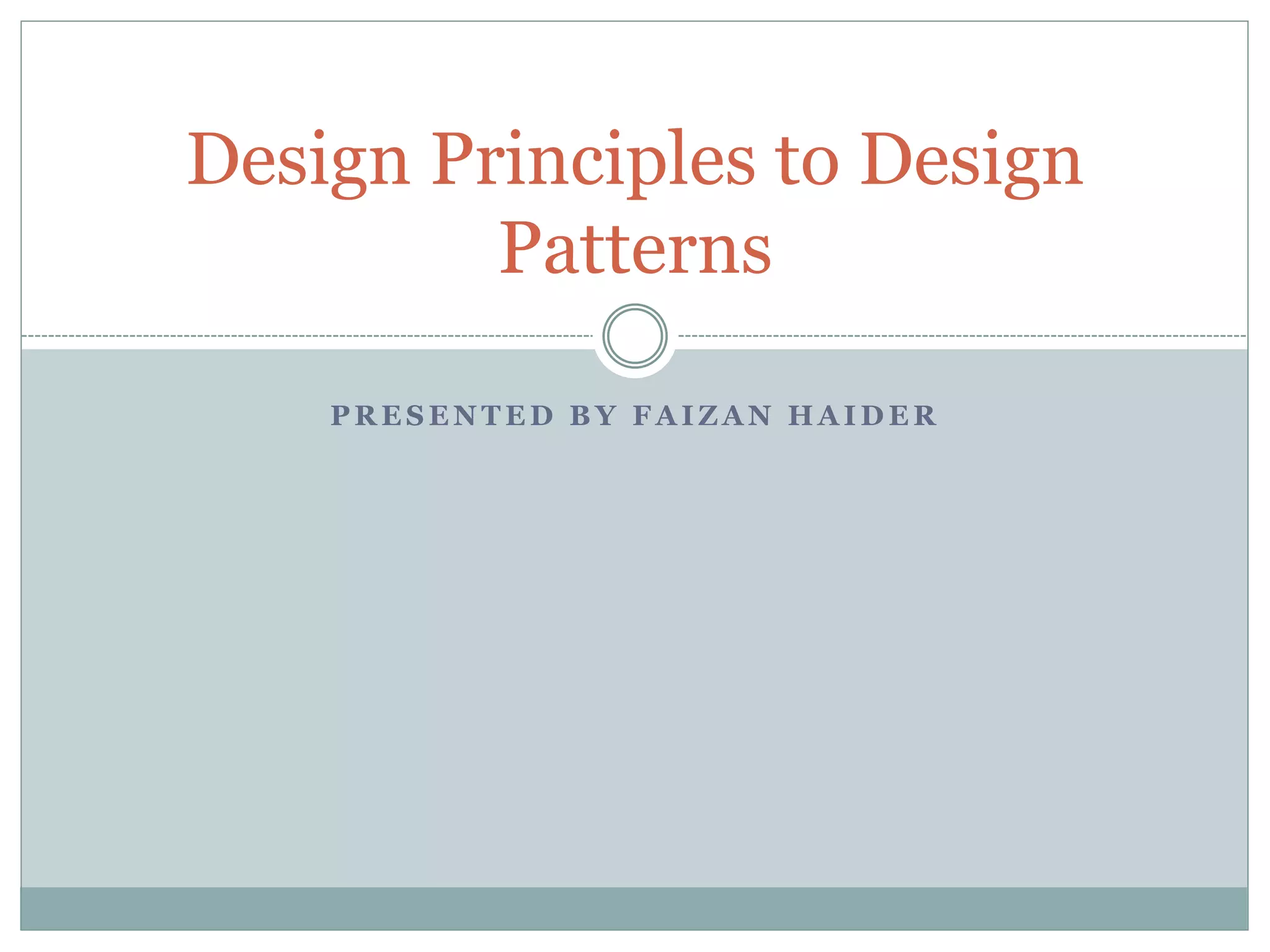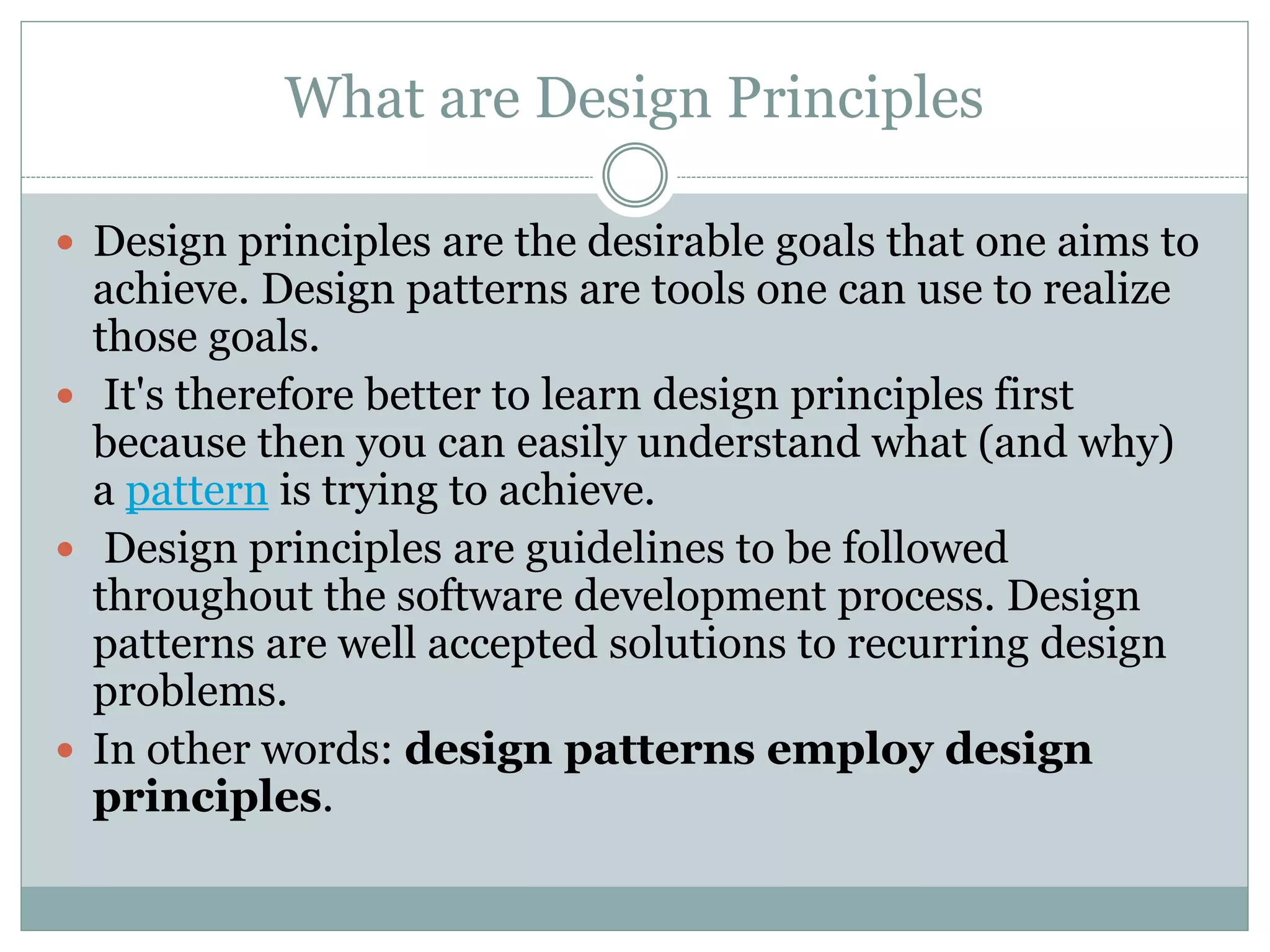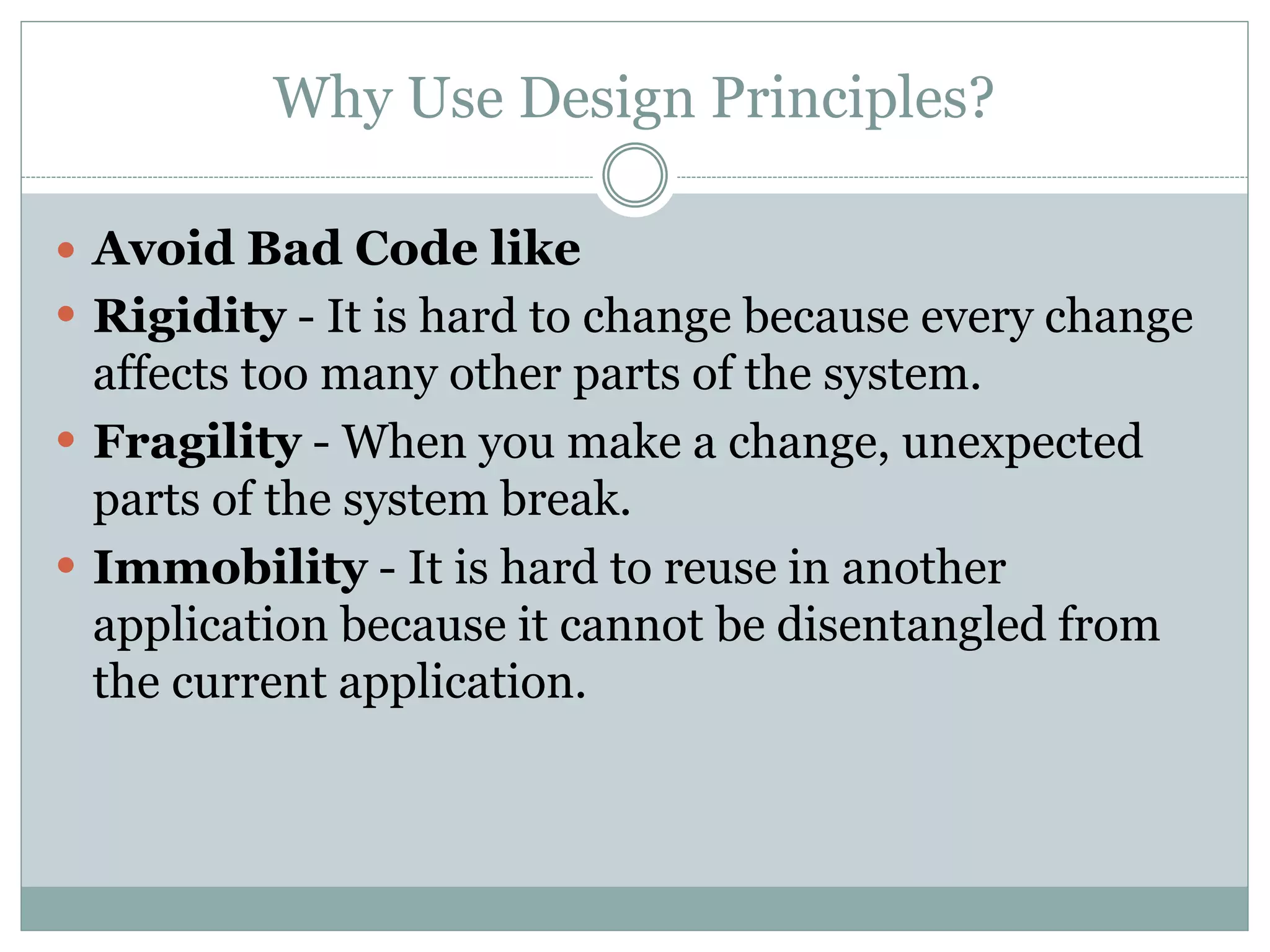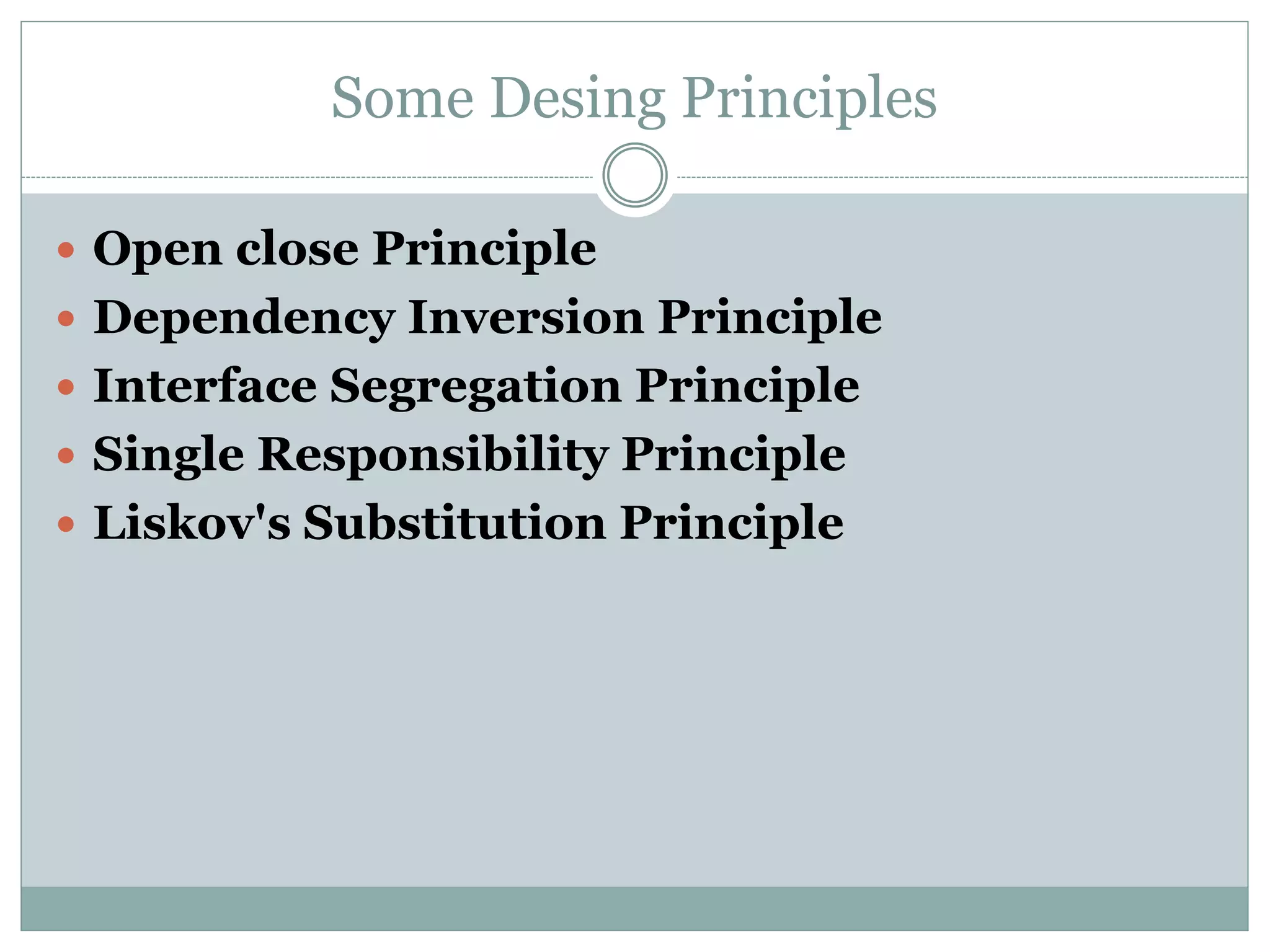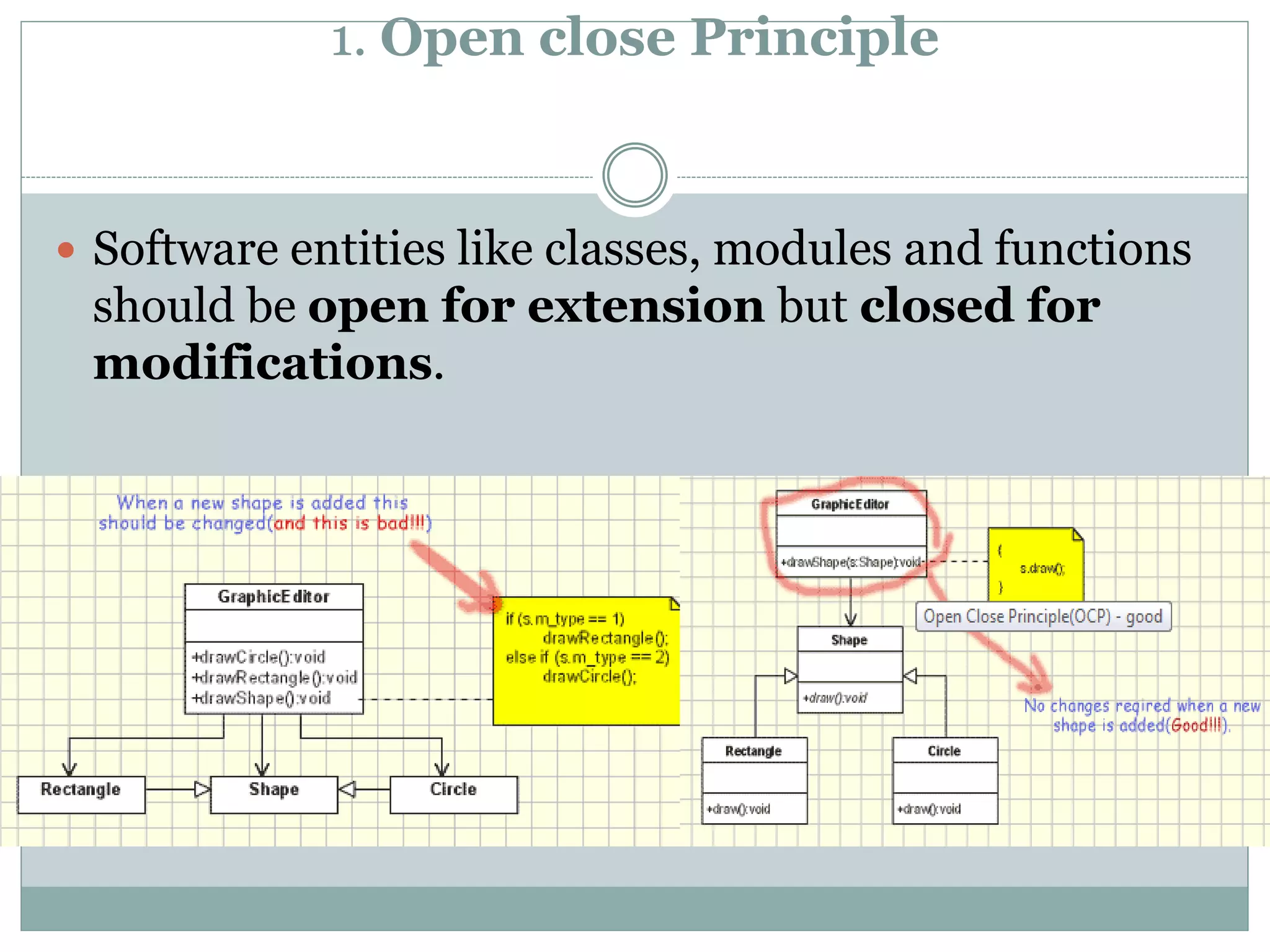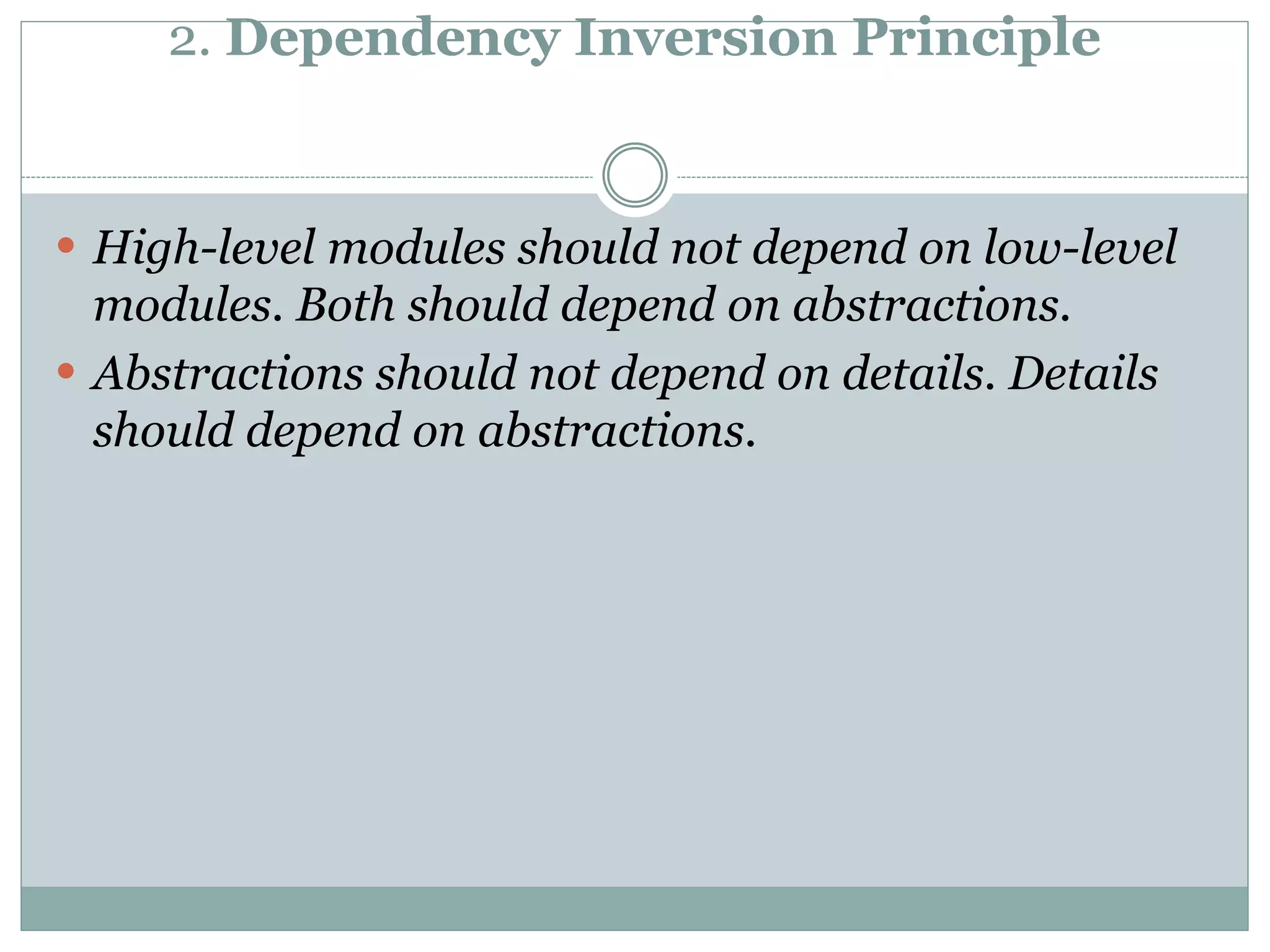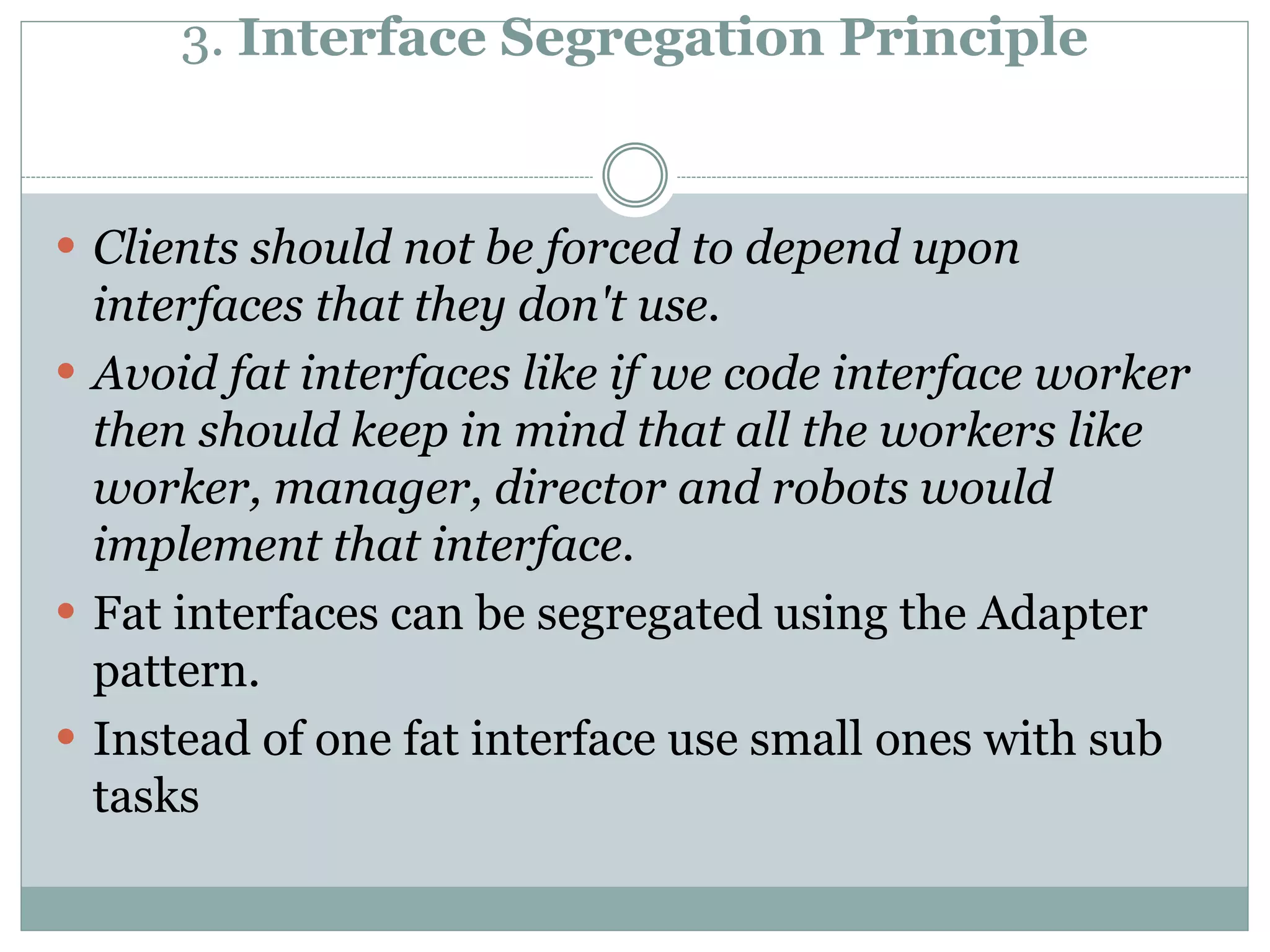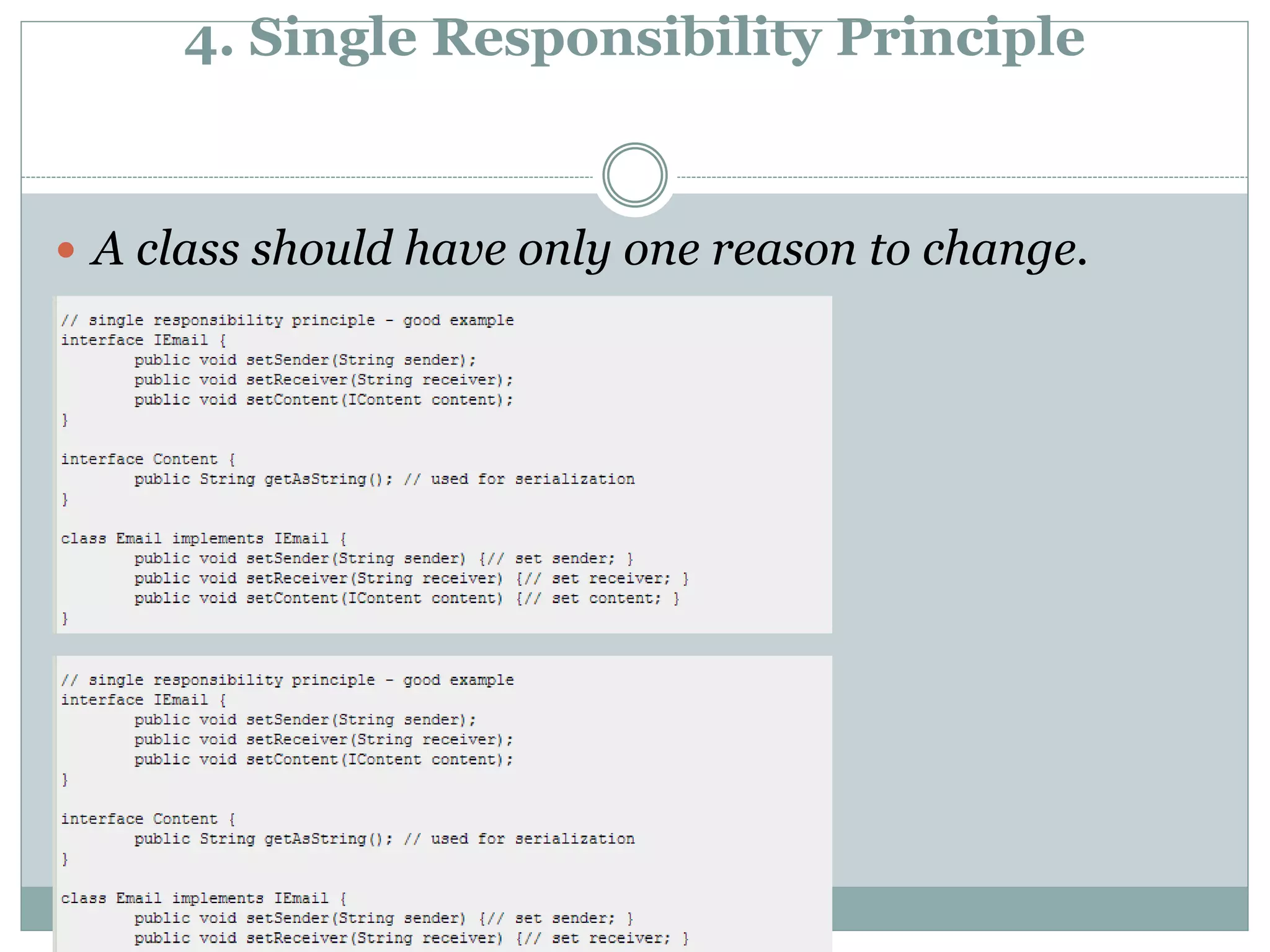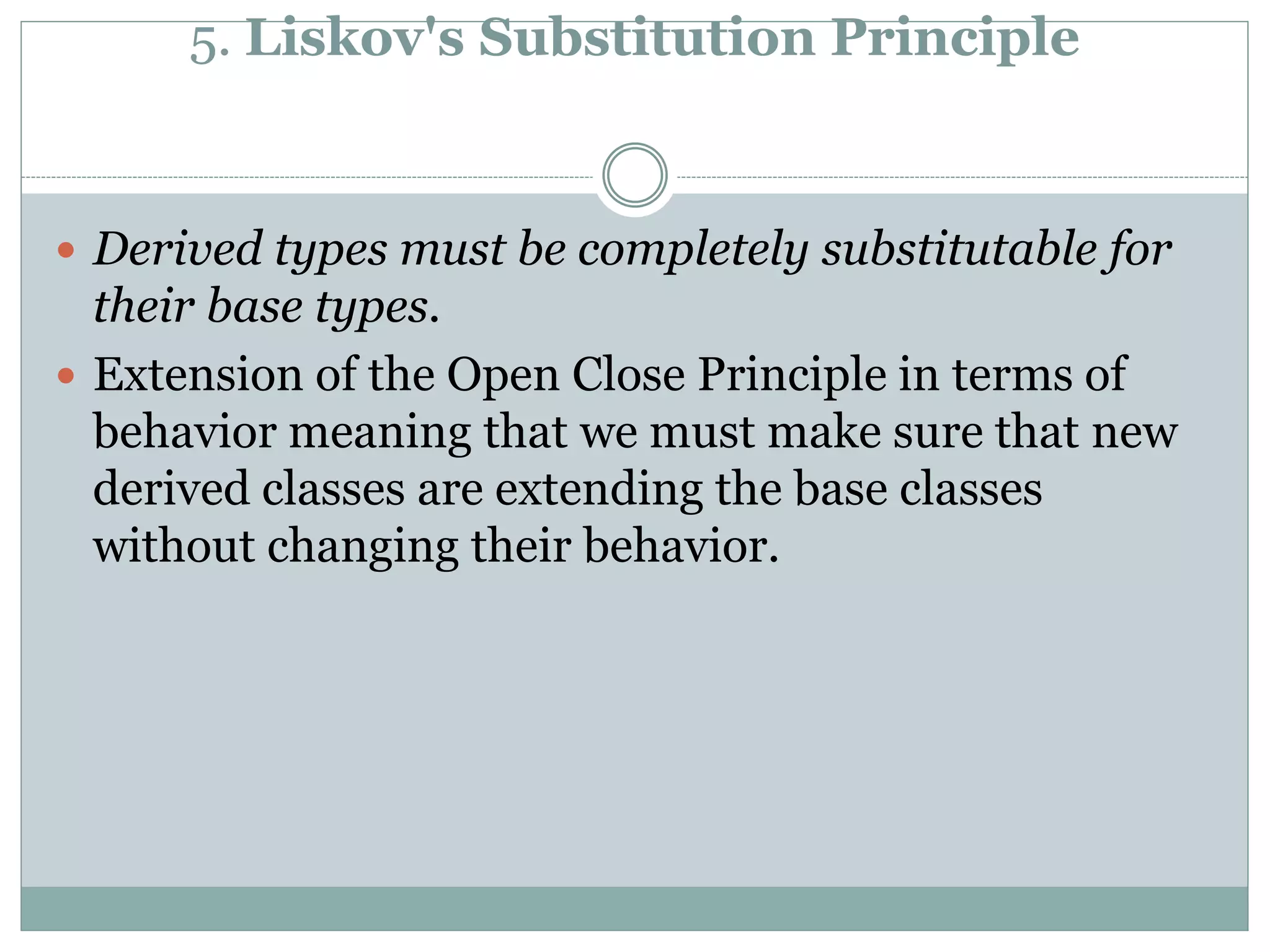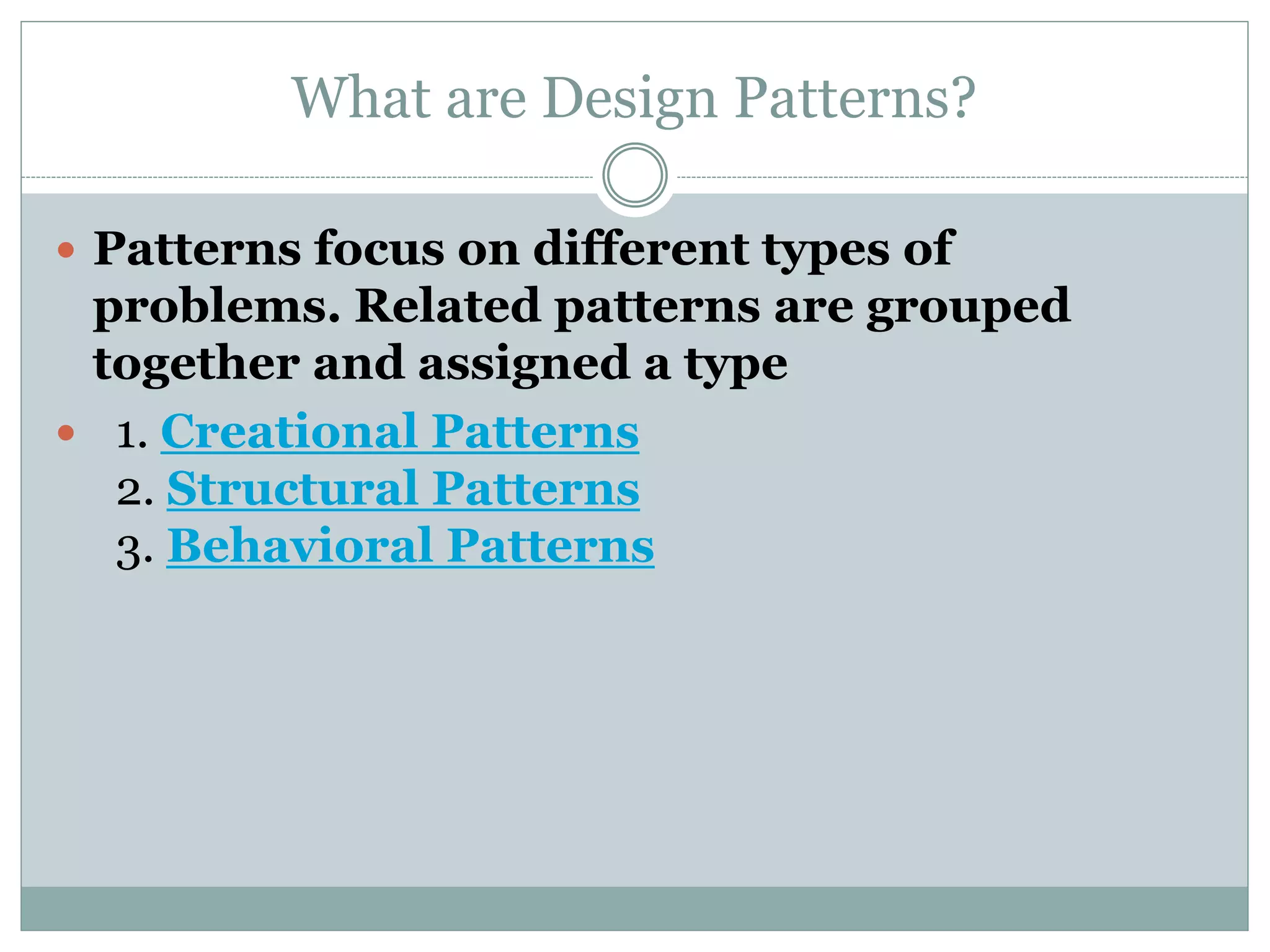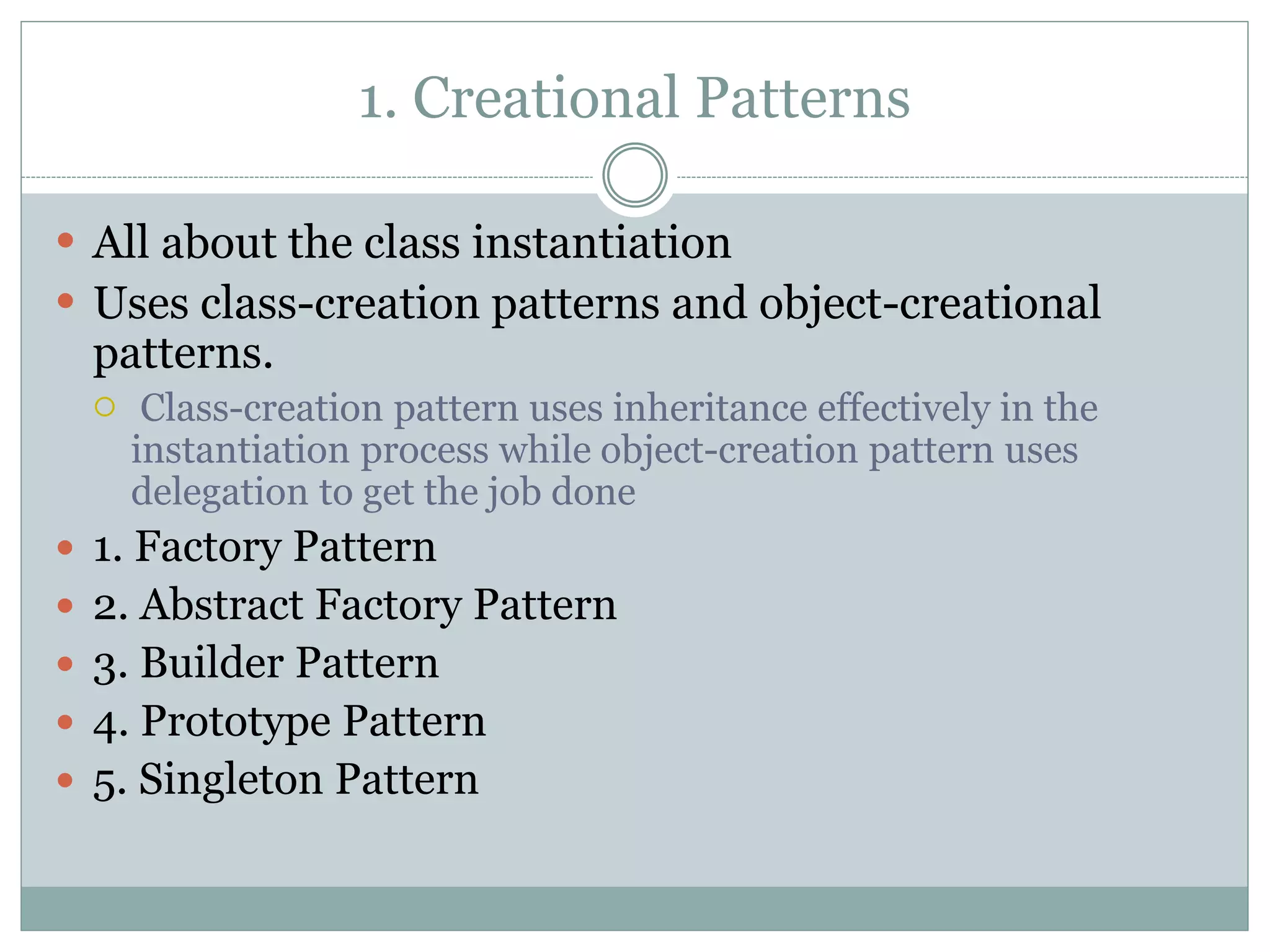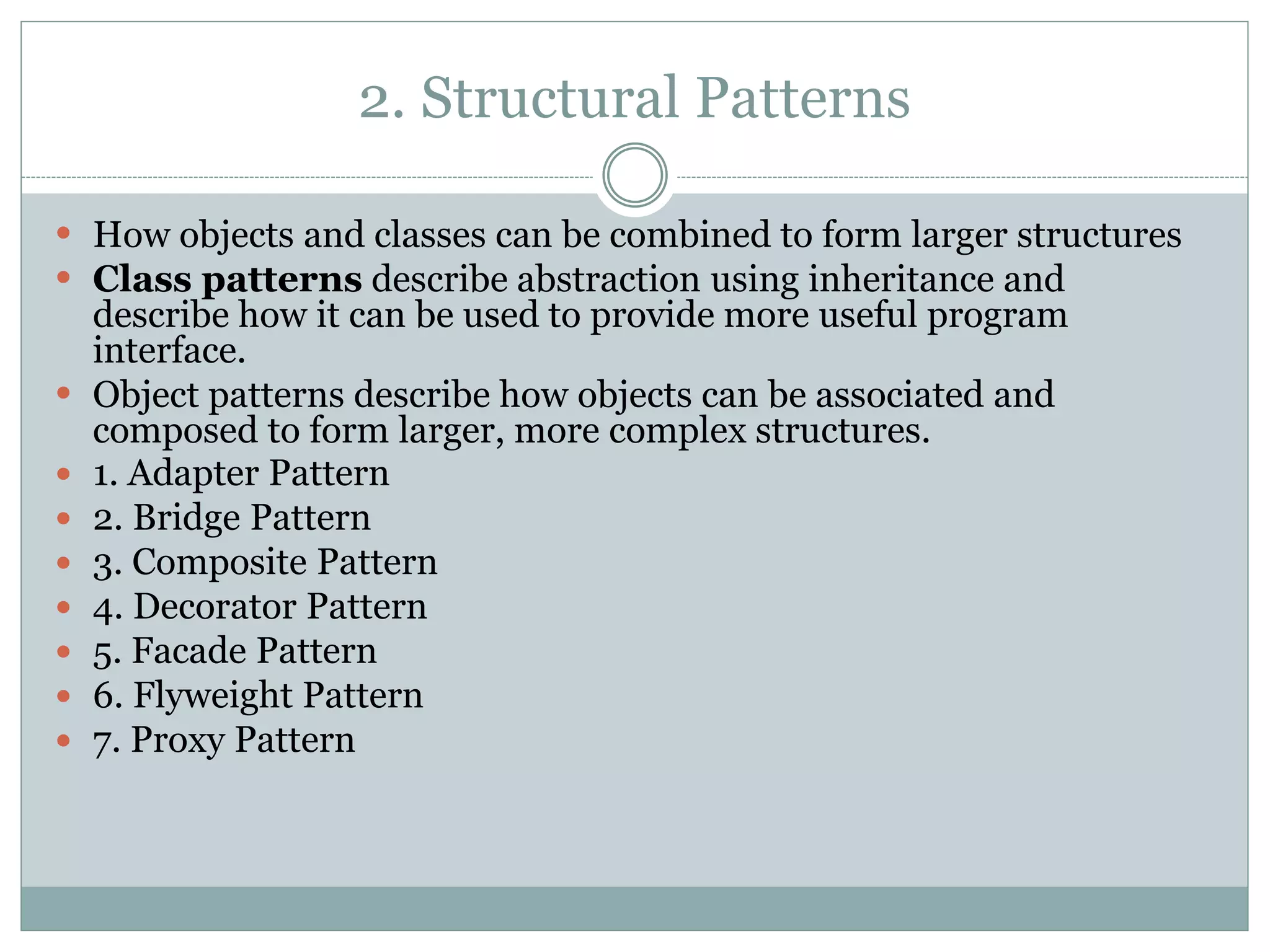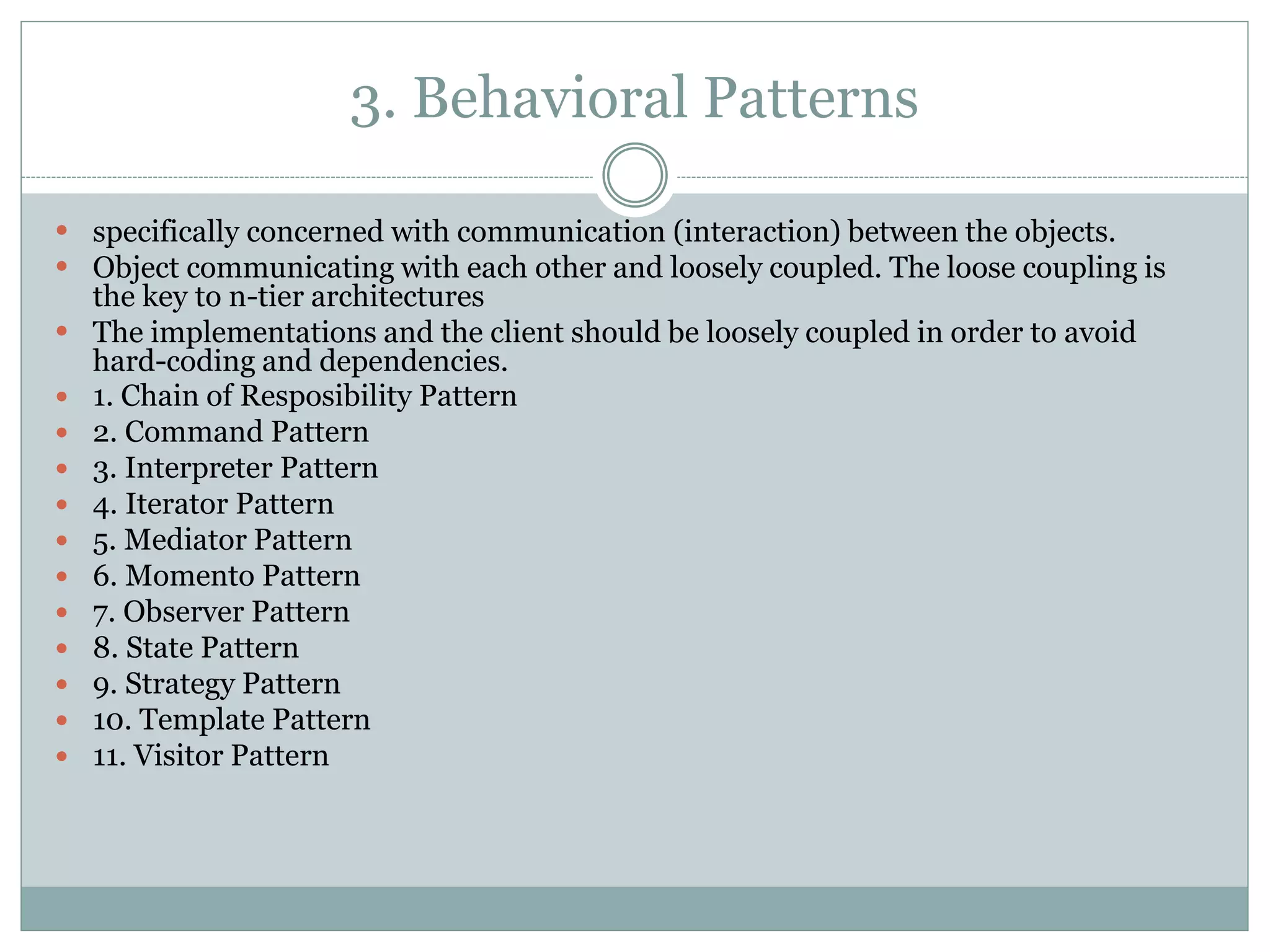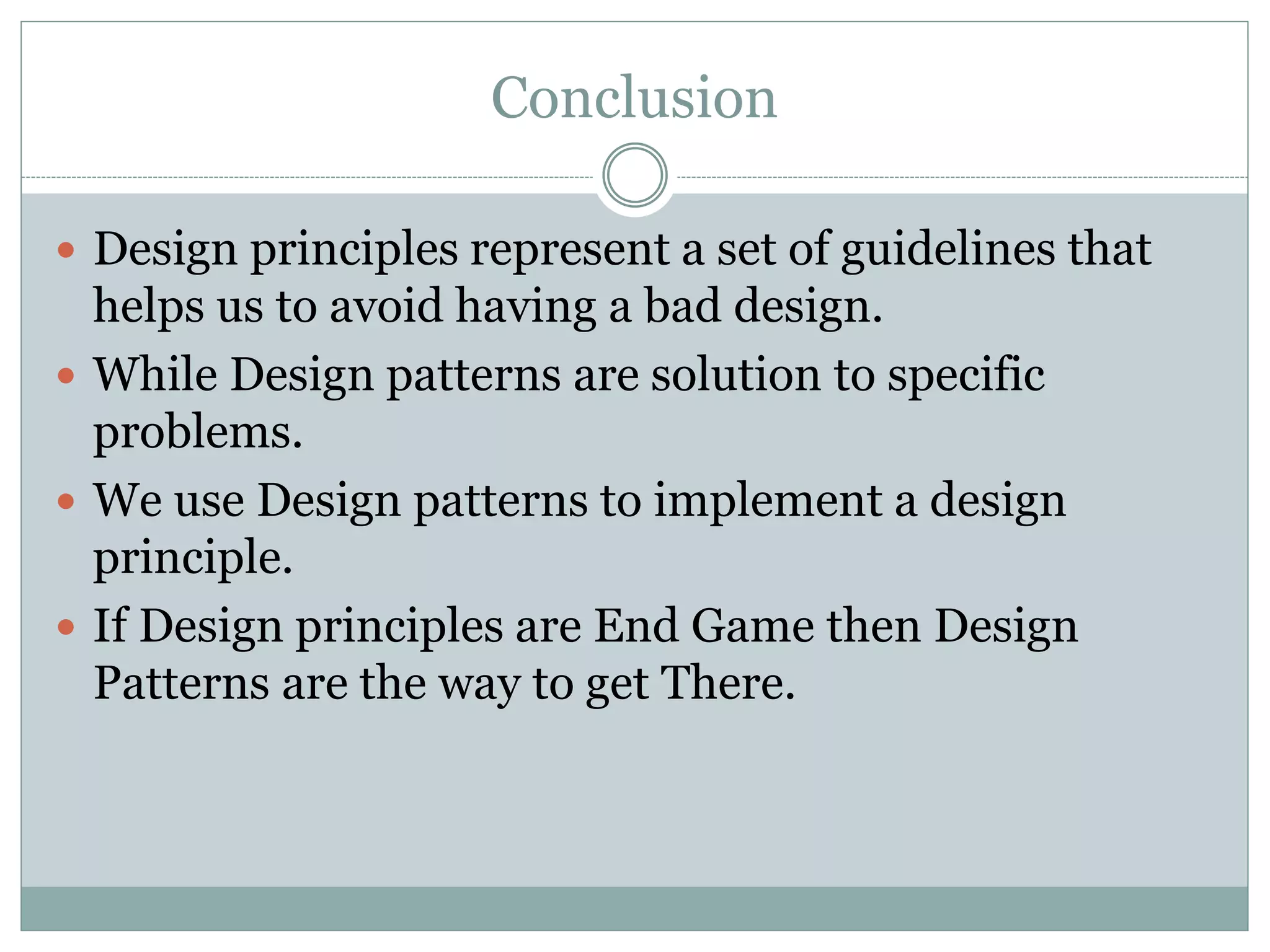Design principles are essential guidelines that help achieve desirable goals in software development, while design patterns are practical tools to implement those principles. Key design principles include the open/closed principle and the single responsibility principle, which aim to avoid issues like rigidity and fragility in code. Design patterns are categorized into creational, structural, and behavioral patterns, each providing solutions to specific design problems and helping to realize the established principles.
